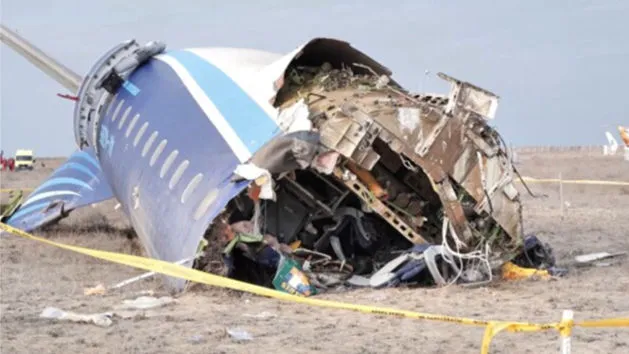Subkhon Rakhimov, a survivor of the Azerbaijan Airlines crash near Aktau, Kazakhstan, on December 25, shared a new video showing suspected shrapnel damage to the aircraft. The video, now circulating on social media, reveals holes in the plane’s wings and body.
Prayers and Panic Before the Crash
Rakhimov had previously posted a video before the crash, showing passengers in panic with loud engine noises in the background. The video captures the tense moments right before the plane plummeted.
🚨AZERBAIJAN AIRLINES PASSENGER WHO SURVIVED CRASH FILMS SHRAPNEL DAMAGE
Related NewsSubkhon Rakhimov, a passenger on the Azerbaijan Airlines flight that tragically crashed, miraculously survived the incident. He initially filmed a video for his wife as the plane plummeted from the sky.… https://t.co/J9oGZIpGiG pic.twitter.com/0nk9YIbtJV
— Mario Nawfal (@MarioNawfal) December 26, 2024
Details of the Crash
The Embraer 190, flying from Baku, Azerbaijan, to Grozny, Russia, was diverted for unknown reasons. The aircraft crashed while attempting to land in Aktau, Kazakhstan, after flying across the Caspian Sea. Tragically, 38 people died, and 29 survivors were injured, according to AP.
Statements from Authorities
Azerbaijani President Ilham Aliyev stated that dense fog caused the diversion, but the exact cause of the crash has not been confirmed. Russia’s aviation authority, Rosaviatsia, suggested that the diversion might have been due to a bird strike.
Theories about Shrapnel Damage
Aviation experts proposed that the holes in the plane’s tail and wings could be caused by fire from a Russian air defense system, potentially responding to a Ukrainian drone. Rakhimov’s video supports this theory.
Calls for Caution and Investigation
Kremlin spokesperson Dmitry Peskov cautioned against drawing conclusions before investigations are complete, saying, “It would be wrong to make hypotheses before investigators make their verdict.” Similarly, Kazakhstan’s parliamentary speaker, Maulen Ashimbayev, urged that it would be unethical to draw conclusions based on images of the plane’s fragments.























